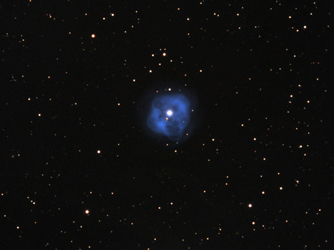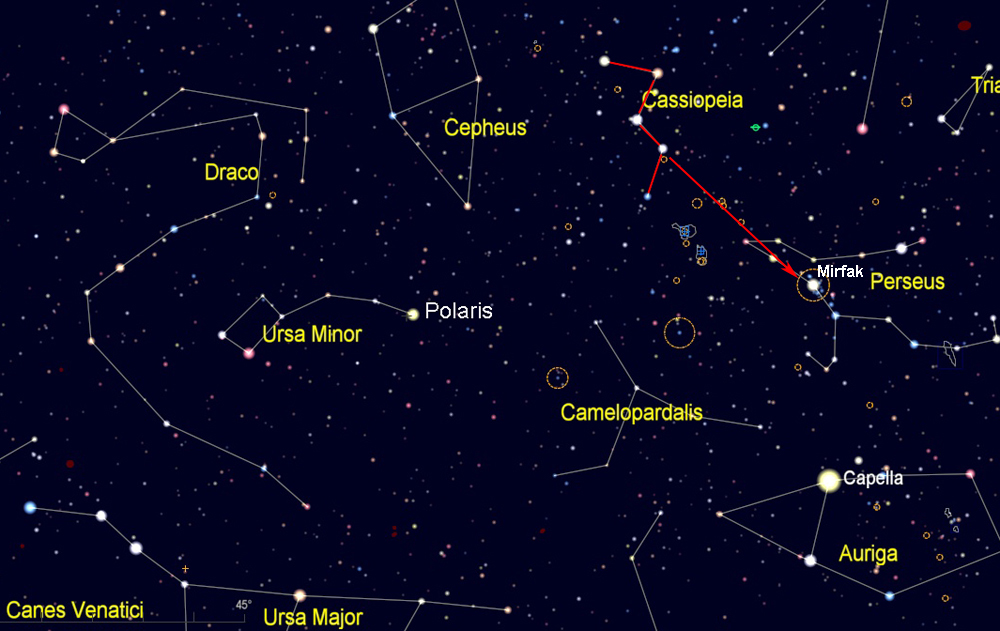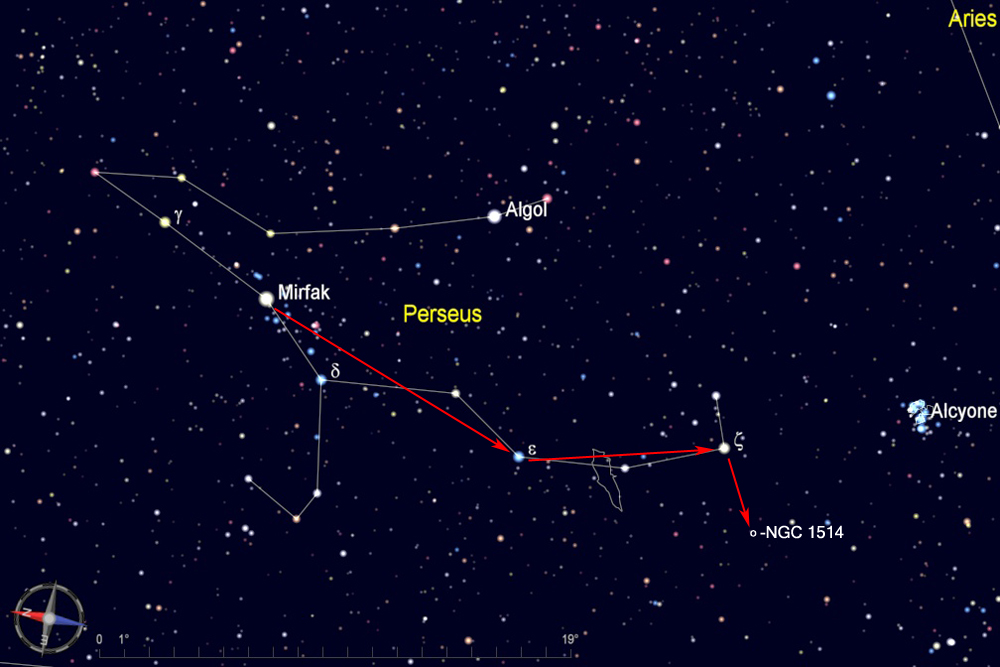
Find the constellation Cassiopeia, which has a distinctive "W" shape (although its orientation changes at different times of year as it circles the north celestial pole). On fall evenings, look for Cassiopeia in the northeast, where its tilt makes it look like a "3", and in the winter look high in the north above Polaris, where it is oriented like an "M".
As shown below, use the stars of Cassiopeia to direct you to the nearby constellation Perseus, and its brightest star, Mirfak.

The stars of Perseus are fairly bright. The shape I see is some sort of animal with a curved tail. Follow the curving chain of stars that form the back leg of Perseus (whether you see the figure as man or beast) until you reach the bright star that represents the rear foot, zeta (ζ) Perseii. From zeta, move about 3.5 degrees east-southeast, as shown below (crossing the constellation boundary into Taurus). Use a low-power eyepiece to search for a star surrounded by a fuzzy nebula, which is NGC 1514.
